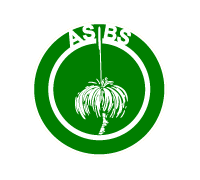
ASBS Newsletter – Book Review
Worterbuch der Botanik:
Morphologie, Anatomie, Taxonomie, Evolution.
Die Termini in ihrem historischen Zusammenhang
written by G. Wagenwitz, 1996
(From ASBS Newsletter Number 95, June 1998)
Publisher: Gustav Fisher Verlag, Verlagssitz Stuttgart Wollgrasweg
49 70599 Stuttgart Germany.
Distributor: Sigloch Distribution GmbH. Am Buchberg 8, 74572 Blaufelden,
Germany.
Specifications: 19Omm x 128mm, 508pp, 10 figures.
Price: German Marks DM 36,80 (soft cover).
This is an excellent book and will be invaluable to anyone interested in the history and derivation of many of the descriptive terms used in botany. It is one of those essential publications like Steam, and Mabberley, that every personal and work library should have. Terminology, and a knowledge of the origins and history of these terms, underpins all of our concepts, and developments in the botanical sciences. The description of botanical forms in this book will, therefore, be particularly useful for those interested in tracing the derivation, and evolution, of many of the terms currently used in the study of plants. It is important to recognise that terminology is not static and as Wagenitz pointed out in this translation of an earlier quote:
-
Motto: It lies in the nature of event scientific development, that there is also an ongoing metamorphosis in the terminology (A. Braun in a letter to Furnrohr from 17.6.1831, Mettenitis 1882, S.195).
What is the book about? The title is a "Worterbuch der Botanik, Morphologic, Anatomie, Taxonomic, Evolution, Die Termini in ihrem historischen Zusammenhang". The book is essentially a dictionary of botany and covers such areas as morphology, anatomy, taxonomy and evolution. The features that make this book so useful is that the author has traced the origins, history, etymology and the key literature that is pertinent to this terminology.
A translation of the description of this book is:
-
"Some 4000 botanical terms in the areas of morphology, anatomy, cytology, taxonomy and evolutionary research (incl. reproductive biology) are briefly defined. The origins and history of the important terms are explained and in many cases the details of the discovery are also given.
Detailed records from the original literature, and summaries, as well as indexes in two foreign languages, provide for an excellent cross referencing of terms."
The book is divided into a number of parts. A short introduction gives a brief synopsis of the development of botanical terminology, along with the major sources the author used to provide information on the various fields of botany e.g. morphology, cytology and genetics etc. The major part of the book is the dictionary with nearly 400 pages and a bibliography of over 100 pages. The dictionary is arranged alphabetically in German. The equivalent English and French terms are listed, and the gender of the French word is indicated. For each term a definition, or multiple definitions, in German is given. The history of the term is given, along with the etymology of those words with Latin or Greek roots. Key literature records are also cited. There are also English-German and French-German Indexes that allow access to the book for English and French speakers.
There are a number of features that I think make this book invaluable. One of the features that I particularly like about the book is the synthesis of botanical terminology across these languages. Each entry lists the equivalent French and English words, e.g., Geschlechtsmerkmale, E: sexual characters, F. caractres sexuels, {E:English; F:French}. The listing of the German term with equivalent French and English words is an extremely useful feature for those of us who have had to struggle through standard German/English dictionaries trying to glean the correct transliteration.
The second feature that will be of interest is the referencing of terms back to the original publication. The history of the use of botanical terms is a fascinating area of research, and this book is an important reference for tracking down the first and/or significant records of many of the terms that are commonly used in botanical sciences. Examples from the book are that the concept of Gewebe E: Tissue, F: Tissu, can be traced back to the illustrations of von Malpighi (1675) and Grew (1682). Or, an additional example is the origins of the term Ligula, E: ligule, F: ligule, and how it has been applied to structures in the Poaceae (Schreber, 1769), Selaginella (Muller, 1846) and Asteraceae.
Key literature citations are also extremely useful as the author has cited the major paper/s dealing with a particular concept, or term. A key reference to 'fasciation' is Georgescu C.C. (1927). Beitrage zur Kenntnis der Verbanderung und einiger verwandter teratologischer Erscheinungen. 129 S., 76 Abb. = Bot. Abh. 11. - Jena. The author has clearly spent considerable time, tracking down, collating, and combining a widely dispersed, vast, multi-lingual literature to produce this publication. The end result is a remarkable cross-lingual synthesis of the history of many botanical terms.
For those who are partially fluent, or have some botanical German, I found the descriptions of the terms relatively easy to translate /transliterate. Non-German speakers will find this part of the book challenging. Anybody interested in tracing the origins of the botanical terms through the literature will find it invaluable, as only a rudimentary knowledge of German is needed. I suspect some, in desperation, will wait for the English translation, but with the cross indexing to English and French many parts of this book are easily accessible to non-German speakers, and I think most researchers, once they get past their initial scepticism, will find it exceedingly useful.
Reviewer: Andrew C. Rozefelds